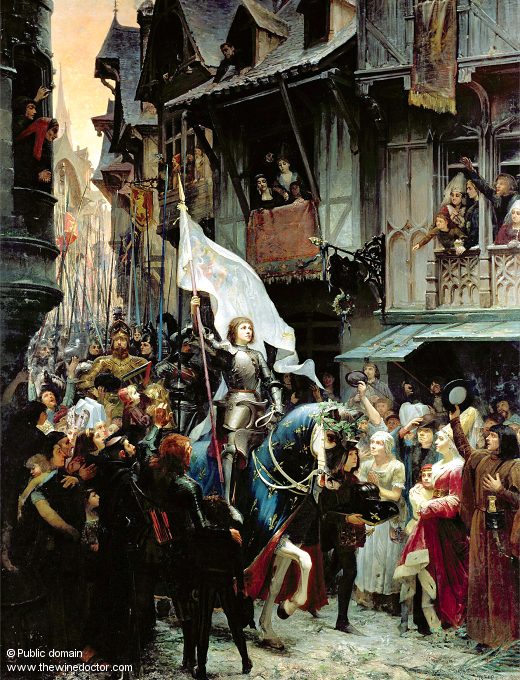Orléans-Cléry
Aujourd’hui, que reste-t-il
À ce Dauphin si gentil
De tout son beau royaume?
Orléans, Beaugency, Notre-Dame de Cléry,
Vendôme, Vendôme.
Today, what is left
To the Dauphin, so kind,
Of all his beautiful kingdom?
Orléans, Beaugency, Notre-Dame de Cléry,
Vendôme, Vendôme.
Le Carillon de Vendôme, French children’s song (15th century)
A few kilometres downstream of the city of Orléans is the commune of Cléry-Saint-André, at the heart of which sits the Basilique Notre-Dame de Cléry. Forever immortalised in the French children’s song Le Carillon de Vendôme (I guess everybody needs to move on from Frères Jacques at some point), the church and the town were among the few possessions of the Dauphin Charles (1403 – 1461), following the signing of the Treaty of Troyes in 1420.
Previously first in line to the throne (his many older brothers having died) but disinherited by the treaty, Charles was left with influence over a tiny nubbin of France centred around Bourges and Orléans, his possessions including – as the song tells us – Cléry, Orléans, Beaugency and Vendôme. Some at the time referred to him, sarcastically, as the King of Orléans. Even after the deaths of the treaty’s signatories, the English and French monarchs Henry V (1386 – 1422) and Charles VI (1368 – 1422) the outlook remained bleak for the Dauphin, as many favoured the elevation of the English infant Henry VI (1421 – 1471) to the French throne. Backed by the English and the Dukes of Burgundy, this looked to be a likely outcome.
That, however, was before the Maid of Orléans, Joan of Arc (1412 – 1431), intervened.
A key stage in the military campaign to place the Dauphin on the throne in which Joan of Arc played a pivotal role was the siege of Orléans, which lasted from October 1428 until May 1429. It ended with the victorious Joan of Arc entering the city, a scene imagined in a 19th-century painting by Jean-Jacques Scherrer (pictured below).

During the course of the siege Joan of Arc passed through nearby Cléry twice, and the church featured in Le Carillon de Vendôme was largely destroyed. It was later rebuilt by Charles VII’s son, Louis XI (1423 – 1483), who was eventually entombed within the new basilica. As a royal chapel and tomb, and a key site in the story of Joan’s campaign, the Basilica of Cléry-Saint-André is a vital stopping point for royalists, historians and all students of Joan of Arc.
Given its huge cultural and historical significance it was hardly surprising that Cléry should be chosen as the focus of the region’s second appellation after Orléans. And thus when the Pinot-and-Chardonnay-focused Orléans appellation was born, so too was Orléans-Cléry, which took account of the region’s long association with Cabernet Franc.
Please log in to continue reading:
